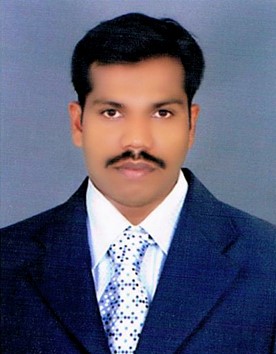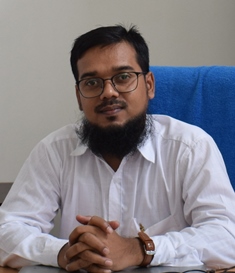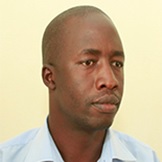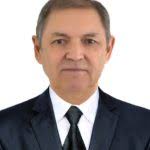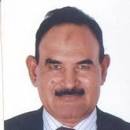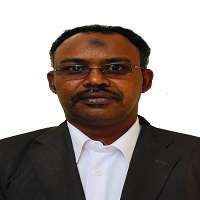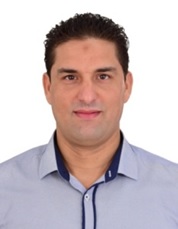Original Research Article
ABSTRACT
Upper airway obstruction refers to difficulty breathing through the upper respiratory tract, including the nostrils, mouth, pharynx, and larynx. This condition can be caused by factors like nasal congestion, allergies, septal deviation, and the presence of polyps in the paranasal sinuses. Nasal polyps can lead to symptoms such as persistent nasal congestion, difficulty breathing through the nose, and loss of smell. As a result, individuals may breathe through their mouths, which can lead to a low tongue position and an "adenoidal facies," characterized by an elongated face. Additionally, changes in the stomatognathic system, such as a reduced upper dental arch, malocclusions, and clockwise mandibular growth, may be observed. This study aims to explore the correlation between nasal polyps and skeletal patterns. Clinical records from 147 orthodontic patients at the Faculty of Dentistry, Mexicali, were analyzed. Information gathered included gender, skeletal class (I, II, or III), and facial biotype (dolichofacial, mesofacial, or brachyfacial). CBCT images were obtained, and various parameters, including the Jarabak index and nasal polyp presence, were analyzed. The results revealed that mesofacial biotype was the most common (40%), and skeletal Class II predominated (48%). A counterclockwise growth pattern was observed in 50% of patients, while 79% had no nasal polyps. The study concluded that no significant correlation was found between nasal polyps, skeletal class, and facial pattern. However, the absence of polyps was more common in mesofacial patients and those with skeletal Class II. The study recommends further research with larger sample sizes and standardized data collection methods to confirm these findings.
ABSTRACT
Background: The restoration of the anterior maxilla with implants requires precise techniques to ensure aesthetic outcomes. Immediate implant placement with provisional restoration is a commonly used method to preserve soft tissue and maintain esthetics. Observation: A 40-year-old male patient with a severely decayed maxillary lateral incisor (tooth 22) underwent immediate implant placement following extraction. A resin-based indexing key was fabricated pre-surgery to guide implant positioning. A provisional restoration was placed, and a corrected model was created for final restoration. Radiographic control confirmed the proper positioning. Conclusion: This case illustrates the effectiveness of the corrected model technique combined with digital workflows (CAD/CAM and intraoral scanning) for immediate implant placement and provisional restoration, achieving both aesthetic and functional success.
ABSTRACT
Supernumerary teeth represent a numerical dental anomaly. When present in excess, it is called hyperdontia, which affects both primary and permanent dentition, though permanent dentition is more commonly affected. This clinical case presents hyperdontia involving three supernumerary teeth in the maxillary arch of a non-syndrome 10-year-old child. The diagnosis was made following a consultation prompted by the eruption of a supernumerary tooth with a molar-like shape in the site of the maxillary central incisor and the impaction of this permanent tooth. Subsequently, a radiological examination revealed two additional supernumerary teeth in the premolar region. The treatment plan involved surgical extraction followed by an interceptive phase to guide the eruption of the central incisor.
ABSTRACT
Background: The emergence profile of dental implants is essential for the aesthetic and functional success of implant restorations, particularly in the anterior sector. Proper management of the emergence profile contributes to natural-looking restorations and healthy peri-implant soft tissues. Objective: This case report aims to demonstrate the use of the conventional technique with personalized transfer to record the emergence profile for an implant restoration in the anterior sector. Methods: A 36-year-old female patient, H.A., sought treatment following the extraction of tooth 21. A provisional prosthesis was placed to guide soft tissue healing, and after osseointegration, the emergence profile was recorded using the conventional technique with a personalized transfer method. High- and low-viscosity silicone, flowable resin, and light-curing techniques were used to accurately capture and transfer the emergence profile from the provisional prosthesis to the implant model. Results: The use of the personalized transfer technique allowed for a precise replication of the provisional prosthesis’s emergence profile, ensuring a natural appearance and integration of the final implant restoration. The procedure led to a favorable aesthetic and functional outcome, demonstrating the effectiveness of this technique in anterior implant restorations. Conclusion: The conventional technique with personalized transfer is a reliable and effective method for recording the emergence profile, particularly in the anterior sector where aesthetic demands are high. This technique ensures optimal soft tissue management and enhances the integration of the final prosthesis, offering predictable, functional, and aesthetically pleasing results.
ABSTRACT
The placement of dental implants in the anterior region is a complex procedure requiring precise planning to achieve optimal aesthetic and functional outcomes. This case study presents a 20-year-old male patient who sought rehabilitation of a missing maxillary central incisor (tooth 21) lost due to trauma. After diagnosing biofilm-induced gingivitis and confirming the absence of tooth 21 through clinical and radiographic examinations, a comprehensive treatment plan was developed. The initial periodontal phase involved biofilm control and mechanical debridement, followed by a re-evaluation after two weeks, confirming improved periodontal health. The surgical phase included guided implant placement using a Straumann Bone Level Tapered implant (3.3mm x 12mm), supported by a bovine xenograft and a porcine collagen scaffold to preserve alveolar volume and enhance tissue regeneration. A provisional restoration was placed to sculpt the emergence profile over four months. The technique resulted in excellent implant stability, preserved peri-implant tissues, and achieved functional and aesthetic rehabilitation, demonstrating the feasibility and effectiveness of this approach.
Original Research Article
ABSTRACT
Introduction: Orthodontics, a dental specialty focused on correcting dental anomalies and malocclusions, frequently relies on materials such as orthophosphoric acid (H₃PO₄) for enamel etching during bracket bonding procedures. However, this acid may induce changes in salivary pH, potentially altering the oral microbiota and increasing the prevalence of mucosal lesions. Methods: A clinical and epidemiological study was conducted on 30 patients aged between 10 and 25 years, all undergoing fixed multibracket orthodontic therapy. Salivary pH variations were measured before and after the application of orthophosphoric acid to assess its impact. Results: The findings revealed a significant decrease in salivary pH following acid application, indicating a more acidic environment capable of affecting the oral flora. Discussion: These results highlight the influence of orthophosphoric acid on the oral ecosystem, emphasizing the need for preventive strategies to minimize adverse effects on the mucosa.
Original Research Article
ABSTRACT
Disinfection and sterilization are, nowadays for dento-facial orthopedics as for all medical professions an unavoidable obligation, its objective is to prevent infectious risks both for the patient and the health care team. Objective: Checking the effectiveness of the disinfection process of orthodontic pliers. Material and Methods: This is a serial case study, carried out at the Zabana Dental Clinic of Blida University Hospital Centre and the Microbiology Unit of the Central Laboratory of the University Hospital centre unit Frantz Fanon. The study involved 54 orthodontic pliers. Each instrument was swabbed three swabs, one directly after contact with the patient’s oral cavity, and two after 10 and 15 minutes of disinfection. Results: Microbiological analysis showed that: 100% of the instruments orthodontic pliers collected not disinfected are contaminated by bacteria with polymicrobial cultures mainly composed of Streptococci, Neisseria and Micrococcus. 43.75% of Orthodontic pliers disinfected for 10 minutes are contaminated with bacteria. 24.07% of orthodontic pliers disinfected for 15 minutes are contaminated with bacteria. The disinfection rate of orthodontic pliers was 35.18% after the first disinfection time, and 75.92% after the second disinfection time with p < .05, the difference is significant. In the fight against infections associated with care and to reduce cross-infections transmission, sterilization of reusable instruments, and the use of medical to Single use is the best way to ensure the safety of patients and staff from infectious risk.
Original Research Article
ABSTRACT
Background: The long-term performance of dental implants is a critical factor in determining the success of restorative dental procedures. Zirconia and titanium are two commonly used materials for dental implants, each offering distinct advantages in terms of biocompatibility and aesthetic appeal. However, comparative studies on their long-term clinical outcomes remain limited. Objective: The objective of this study was to compare the long-term clinical performance of zirconia and titanium dental implants over a 12-month period, with a focus on implant survival rates, marginal bone loss (MBL), peri-implant soft tissue health, and complication incidence. Methods: This prospective comparative study included 100 patients who received either zirconia or titanium dental implants. Radiographic assessments were performed to evaluate marginal bone loss at baseline and at 12 months post-loading. Clinical evaluations included probing depth (PD), bleeding on probing (BOP), and keratinized tissue width (KTW). The incidence of complications such as implant fractures, peri-implantitis, and prosthetic failure was also recorded. Results: Both zirconia and titanium implants demonstrated high survival rates at the 12-month follow-up, with titanium implants showing a slightly higher survival rate (98%) compared to zirconia implants (94%). Marginal bone loss was minimal in both groups, with zirconia implants showing 0.50 ± 0.15 mm and titanium implants showing 0.47 ± 0.13 mm. Peri-implant soft tissue health was comparable, with probing depth values of 2.8 ± 0.5 mm for zirconia and 2.7 ± 0.4 mm for titanium implants. The incidence of complications was low, with zirconia implants experiencing a slightly higher rate of peri-implantitis (4%) compared to titanium implants (2%), while prosthetic failure was more frequent in titanium implants (2%). Conclusion: Both zirconia and titanium dental implants demonstrated favorable long-term clinical performance over a 12-month period. Titanium impl
Original Research Article
ABSTRACT
Abstract: Background: Dental caries remains a major public health concern among children globally, with prevalence rates differing between urban and rural regions. This study aims to assess the prevalence of dental caries among school-going children in Jamalpur, Bangladesh, and identify associated risk factors. Methods: A cross-sectional study was conducted from January 2023 to December 2023 at the 250-bed General Hospital in Jamalpur. A total of 200 school-going children aged 6 to 12 years were recruited, with an equal distribution of 100 children from urban and 100 from rural areas. Data were collected through a structured questionnaire and clinical examinations to assess dental caries prevalence. Results: The overall prevalence of dental caries among participants was 68%. A significant difference was observed between urban (60%) and rural (76%) children (χ² = 6.25, p = 0.012). Multivariate logistic regression analysis revealed that children whose parents had primary education or less (OR = 2.1, 95% CI: 1.3–3.4, p = 0.002), those from low socio-economic backgrounds (OR = 1.8, 95% CI: 1.1–3.0, p = 0.015), and those consuming sugary snacks more than three times a week (OR = 2.5, 95% CI: 1.5–4.2, p < 0.001) were at a higher risk of dental caries. Additionally, infrequent tooth brushing (less than twice daily) was significantly associated with dental caries (OR = 2.8, 95% CI: 1.6–4.8, p < 0.001). Conclusion: This study emphasizes the significant occurrence of dental caries among school-aged children in Jamalpur, with a higher prevalence in rural areas. Factors such as socio-economic status, dietary patterns, and oral hygiene habits play a crucial role in increasing the risk of dental caries. The results highlight the necessity for focused public health initiatives to enhance children's oral health in Bangladesh.
